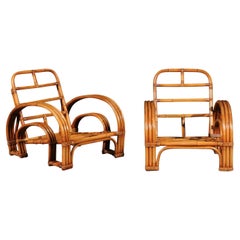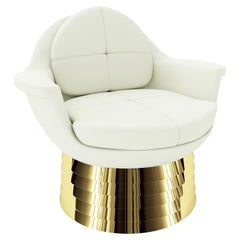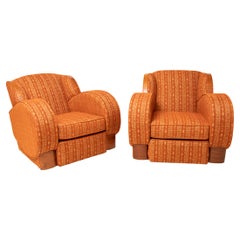Orange Art Deco Lounge Chairs
Vintage 1940s Philippine Art Deco Lounge Chairs
Cane, Rattan
Recent Sales
2010s Canadian Art Deco Lounge Chairs
Brass
Early 20th Century British Art Deco Armchairs
Fabric
Vintage 1930s French Art Deco Lounge Chairs
Metal
Vintage 1970s Dutch Art Deco Armchairs
Leather
Vintage 1970s Swedish Art Deco Lounge Chairs
Leather
Late 20th Century Art Deco Lounge Chairs
Vintage 1930s Swedish Art Deco Club Chairs
Leather
Vintage 1940s Art Deco Slipper Chairs
Upholstery
Late 20th Century Art Deco Armchairs
Late 20th Century Art Deco Armchairs
Late 20th Century Art Deco Chairs
Leather
Vintage 1920s Austrian Art Deco Lounge Chairs
Vintage 1930s American Art Deco Lounge Chairs
Rattan
21st Century and Contemporary French Art Deco Club Chairs
Leather
Mid-20th Century Philippine Art Deco Patio and Garden Furniture
Rattan
Vintage 1930s Swedish Art Deco Club Chairs
Birch
Mid-20th Century American Art Deco Lounge Chairs
Rattan
Vintage 1940s French Art Deco Club Chairs
PVC, Wood
Mid-20th Century French Art Deco Lounge Chairs
Cane, Teak
Vintage 1940s Swedish Art Deco Lounge Chairs
20th Century Hungarian Art Deco Club Chairs
Upholstery, Wood, Lacquer
People Also Browsed
Early 20th Century American Adirondack Patio and Garden Furniture
Rattan
Vintage 1940s Unknown Organic Modern Lounge Chairs
Cane, Rattan
Orange Art Deco Lounge Chairs For Sale on 1stDibs
How Much are Orange Art Deco Lounge Chairs?
A Close Look at Art Deco Furniture
Art Deco furniture is characterized by its celebration of modern life. More than its emphasis on natural wood grains and focus on traditional craftsmanship, vintage Art Deco dining chairs, tables, desks, cabinets and other furniture — which typically refers to pieces produced during the 1920s and 1930s — is an ode to the glamour of the “Roaring Twenties.”
ORIGINS OF ART DECO FURNITURE DESIGN
- Emerged in the 1920s
- Flourished while the popularity of Art Nouveau declined
- Term derives from 1925’s Exposition Internationale des Arts Décoratifs et Industriels Modernes (International Exhibition of Modern Decorative and Industrial Arts) in Paris, France
- Informed by Ancient Egypt, Cubism, Futurism, Louis XVI, De Stijl, modernism and the Vienna Secession; influenced Streamline Moderne and mid-century modernism
CHARACTERISTICS OF ART DECO FURNITURE DESIGN
- Bold geometric lines and forms, floral motifs
- Use of expensive materials such as shagreen or marble as well as exotic woods such as mahogany, ebony and zebra wood
- Metal accents, shimmering mirrored finishes
- Embellishments made from exotic animal hides, inlays of mother-of-pearl or ivory
ART DECO FURNITURE DESIGNERS TO KNOW
VINTAGE ART DECO FURNITURE ON 1STDIBS
Few design styles are as universally recognized and appreciated as Art Deco. The term alone conjures visions of the Roaring Twenties, Machine Age metropolises, vast ocean liners, sleek typography and Prohibition-era hedonism. The iconic movement made an indelible mark on all fields of design throughout the 1920s and ’30s, celebrating society’s growing industrialization with refined elegance and stunning craftsmanship.
Widely known designers associated with the Art Deco style include Émile-Jacques Ruhlmann, Eileen Gray, Maurice Dufrêne, Paul Follot and Jules Leleu.
The term Art Deco derives from the name of a large decorative arts exhibition held in Paris in 1925. “Art Deco design” is often used broadly, to describe the work of creators in associated or ancillary styles. This is particularly true of American Art Deco, which is also called Streamline Moderne or Machine Age design. (Streamline Moderne, sometimes known as Art Moderne, was a phenomenon largely of the 1930s, post–Art Nouveau.)
Art Deco textile designers employed dazzling floral motifs and vivid colors, and while Art Deco furniture makers respected the dark woods and modern metals with which they worked, they frequently incorporated decorative embellishments such as exotic animal hides as well as veneers in their seating, case pieces, living room sets and bedroom furniture.
From mother-of-pearl inlaid vitrines to chrome aviator chairs, bold and inventive works in the Art Deco style include chaise longues (also known as chaise lounges) and curved armchairs. Today, the style is still favored by interior designers looking to infuse a home with an air of luxury and sophistication.
The vintage Art Deco furniture for sale on 1stDibs includes dressers, coffee tables, decorative objects and more.
Finding the Right Lounge Chairs for You
While this specific seating is known to all for its comfort and familiar form, the history of how your favorite antique or vintage lounge chair came to be is slightly more ambiguous.
Although there are rare armchairs dating back as far as the 17th century, some believe that the origins of the first official “lounge chair” are tied to Hungarian modernist designer-architect Marcel Breuer. Sure, Breuer wasn’t exactly reinventing the wheel when he introduced the Wassily lounge chair in 1925, but his seat was indeed revolutionary for its integration of bent tubular steel.
Officially, a lounge chair is simply defined as a “comfortable armchair,” which allows for the shape and material of the furnishings to be extremely diverse. Whether or not chaise longues make the cut for this category is a matter of frequent debate.
The Eames lounge chair, on the other hand, has come to define somewhat of a universal perception of what a lounge chair can be. Introduced in 1956, the Eames lounger (and its partner in cozy, the ottoman) quickly became staples in television shows, prestigious office buildings and sumptuous living rooms. Venerable American mid-century modern designers Charles and Ray Eames intended for it to be the peak of luxury, which they knew meant taking furniture to the next level of style and comfort. Their chair inspired many modern interpretations of the lounge — as well as numerous copies.
On 1stDibs, find a broad range of unique lounge chairs that includes everything from antique Victorian-era seating to vintage mid-century modern lounge chairs by craftspersons such as Hans Wegner to contemporary choices from today’s innovative designers.


